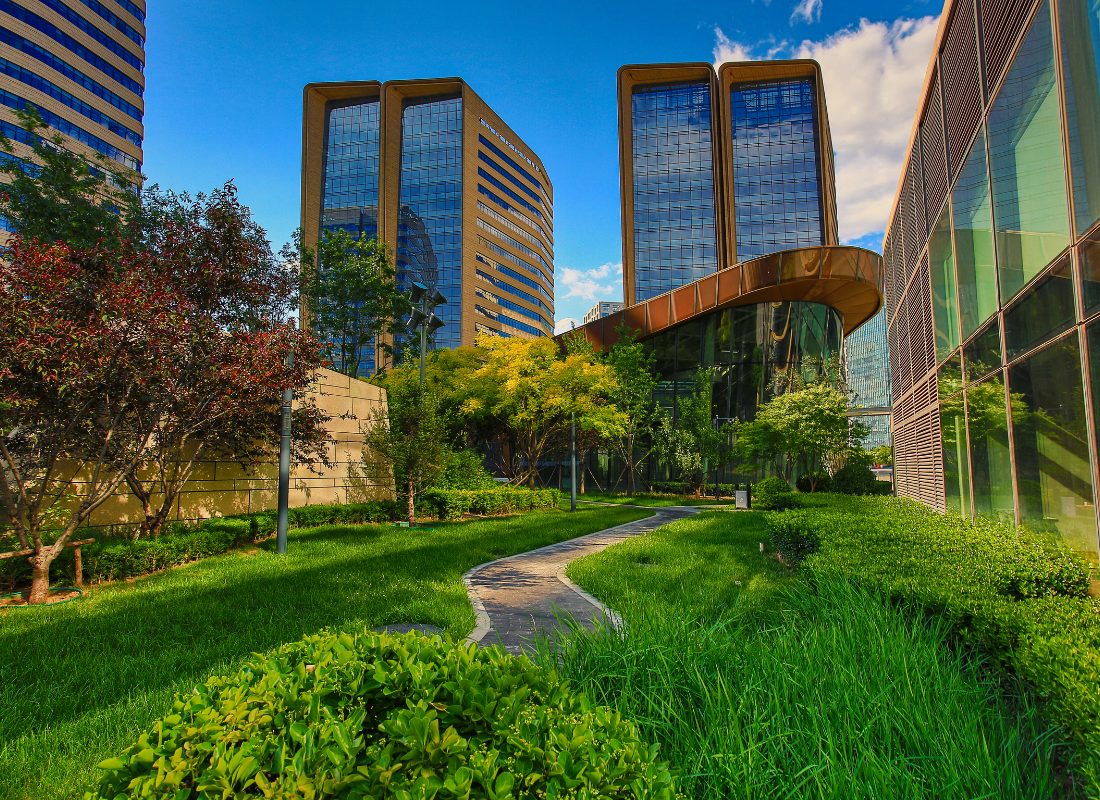
In recent years, awareness of the impacts of environmental degradation on mental health has surged, particularly among vulnerable communities. The connection between environmental stressors—like pollution, climate disasters, and rising temperatures—and mental health is undeniable.  These challenges are felt most acutely in low-income or marginalized communities, which often have fewer resources and less resilience to withstand the psychological effects of a deteriorating environment. Addressing these issues requires sustainable solutions that can improve mental health support systems while fostering community resilience.
These challenges are felt most acutely in low-income or marginalized communities, which often have fewer resources and less resilience to withstand the psychological effects of a deteriorating environment. Addressing these issues requires sustainable solutions that can improve mental health support systems while fostering community resilience.
Understanding Environmental Stressors and Mental Health
Environmental degradation takes many forms, from air and water pollution to extreme weather events and climate change. Each of these stressors can take a toll on mental well-being:
Pollution and Health Anxiety
 Chronic exposure to pollution can lead to respiratory and cardiovascular issues, which are stressful enough on their own. However, the mental burden—such as anxiety about health and long-term exposure to pollutants—compounds the problem. Low-income communities often live closer to industrial areas or busy highways, exposing them to higher pollution levels and the resulting health risks.
Chronic exposure to pollution can lead to respiratory and cardiovascular issues, which are stressful enough on their own. However, the mental burden—such as anxiety about health and long-term exposure to pollutants—compounds the problem. Low-income communities often live closer to industrial areas or busy highways, exposing them to higher pollution levels and the resulting health risks.
Climate Change-Induced Trauma
 Climate disasters like hurricanes, floods, and wildfires not only devastate homes and landscapes but also leave lasting emotional scars. Those repeatedly exposed to such events, especially without access to adequate recovery resources, are at heightened risk of trauma and PTSD. Vulnerable communities are particularly affected, as they may lack the infrastructure, insurance, or financial security needed to rebuild their lives after a disaster.
Climate disasters like hurricanes, floods, and wildfires not only devastate homes and landscapes but also leave lasting emotional scars. Those repeatedly exposed to such events, especially without access to adequate recovery resources, are at heightened risk of trauma and PTSD. Vulnerable communities are particularly affected, as they may lack the infrastructure, insurance, or financial security needed to rebuild their lives after a disaster.
Eco-Anxiety in Young People
 The term eco-anxiety has emerged to describe the chronic fear of environmental disaster, particularly among younger generations. As these issues become more pronounced, vulnerable communities feel the anxiety and stress of living in places most at risk from environmental harm. This anxiety can be compounded by feelings of helplessness, especially in communities with limited capacity to make significant changes.
The term eco-anxiety has emerged to describe the chronic fear of environmental disaster, particularly among younger generations. As these issues become more pronounced, vulnerable communities feel the anxiety and stress of living in places most at risk from environmental harm. This anxiety can be compounded by feelings of helplessness, especially in communities with limited capacity to make significant changes.
Barriers to Mental Health Care in Vulnerable Communities
 In addition to the environmental stressors, vulnerable communities often face substantial barriers to accessing mental health care. These barriers include:
In addition to the environmental stressors, vulnerable communities often face substantial barriers to accessing mental health care. These barriers include:
- Limited Access to Services: Many low-income areas lack mental health facilities and resources. Without easy access to professional care, residents must rely on less formal, often inadequate support systems.
- Stigma Around Mental Health: In various cultures, mental health remains a taboo subject, discouraging individuals from seeking the help they need. For communities already facing environmental hardship, mental health support is often under-prioritized.
- Lack of Resilient Infrastructure: Vulnerable communities often lack resilient infrastructure that could protect them from the worst impacts of environmental disasters. This creates a cycle where people are exposed to stress-inducing environments without the resources to effectively respond or recover.
Sustainable Solutions to Address Mental Health and Environmental Stress
To mitigate these mental health impacts, sustainable solutions are needed that not only address the environmental problems but also provide robust mental health support. Here are some promising approaches:
Community-Based Mental Health Programs:
 In many communities, local leaders and volunteers can be trained to provide basic mental health support, creating community-based mental health programs. These programs are low-cost, culturally sensitive, and directly address the community’s needs, making them a sustainable option for areas lacking formal mental health infrastructure.
In many communities, local leaders and volunteers can be trained to provide basic mental health support, creating community-based mental health programs. These programs are low-cost, culturally sensitive, and directly address the community’s needs, making them a sustainable option for areas lacking formal mental health infrastructure.
Green Spaces as Therapeutic Respite
 The presence of green spaces in urban areas has been proven to reduce stress and improve mental health. Community gardens, parks, and urban forests can provide an oasis for relaxation, social connection, and exercise, all of which support mental well-being. For instance, projects like The Happy Turtle Straw not only work on sustainable alternatives to everyday products, like rice straws and eco-friendly utensils, but also inspire communities to think about and engage with nature in new ways.
The presence of green spaces in urban areas has been proven to reduce stress and improve mental health. Community gardens, parks, and urban forests can provide an oasis for relaxation, social connection, and exercise, all of which support mental well-being. For instance, projects like The Happy Turtle Straw not only work on sustainable alternatives to everyday products, like rice straws and eco-friendly utensils, but also inspire communities to think about and engage with nature in new ways.
Eco-Friendly Infrastructure for Resilience
 Sustainable housing and infrastructure can greatly reduce the environmental stress on vulnerable communities. For example, flood-resistant homes, clean energy solutions, and eco-friendly building materials can create safer living conditions. This reduces both physical and mental health risks by providing a stable environment where people feel more secure.
Sustainable housing and infrastructure can greatly reduce the environmental stress on vulnerable communities. For example, flood-resistant homes, clean energy solutions, and eco-friendly building materials can create safer living conditions. This reduces both physical and mental health risks by providing a stable environment where people feel more secure.
Telemedicine for Mental Health Access
 As telemedicine becomes more common, it’s increasingly feasible to provide mental health services remotely. This is particularly useful in communities without nearby mental health facilities, allowing residents to access therapy, counseling, and support from professionals without having to travel. By reducing logistical and financial barriers, telemedicine can make mental health care more accessible and sustainable.
As telemedicine becomes more common, it’s increasingly feasible to provide mental health services remotely. This is particularly useful in communities without nearby mental health facilities, allowing residents to access therapy, counseling, and support from professionals without having to travel. By reducing logistical and financial barriers, telemedicine can make mental health care more accessible and sustainable.
Case Studies: Green Spaces, Community Support, and Sustainable Innovation
 In recent years, several innovative projects have illustrated how environmental improvements can benefit mental health:
In recent years, several innovative projects have illustrated how environmental improvements can benefit mental health:
- Urban Green Space Initiatives: Cities like Los Angeles and New York have implemented green space projects, turning vacant lots into community gardens and mini-parks. These spaces offer residents a place to unwind, exercise, and connect with nature, directly improving mental health.
- Nonprofits and NGOs Supporting Mental Health in Climate-Affected Areas: Organizations like Climate Psychiatry Alliance work to bring mental health resources to communities affected by environmental issues. By focusing on areas frequently hit by climate disasters, these organizations provide targeted mental health support to those most in need.
- Eco-Friendly Product Initiatives for Community Awareness:
 Companies like The Happy Turtle Straw are raising awareness about sustainable practices through eco-friendly products such as rice straws, which are biodegradable alternatives to plastic. By reducing plastic waste and promoting sustainable living, they contribute to a cleaner environment and encourage consumers to adopt greener habits. For communities impacted by pollution and waste, adopting eco-friendly products can instill a sense of pride and involvement in environmental care.
Companies like The Happy Turtle Straw are raising awareness about sustainable practices through eco-friendly products such as rice straws, which are biodegradable alternatives to plastic. By reducing plastic waste and promoting sustainable living, they contribute to a cleaner environment and encourage consumers to adopt greener habits. For communities impacted by pollution and waste, adopting eco-friendly products can instill a sense of pride and involvement in environmental care.
Conclusion: Building a Future of Environmental and Mental Well-Being
Environmental degradation and mental health are intertwined, especially in communities facing systemic barriers. By adopting sustainable solutions—such as community-led mental health programs, green spaces, resilient infrastructure, and eco-friendly products like those from The Happy Turtle Straw—we can mitigate these impacts and foster resilience. As we continue to develop sustainable ways to address these problems, we move closer to creating communities that are both mentally and environmentally healthy.
 Addressing the mental health impacts of environmental stress is essential not only for individual well-being but also for fostering collective resilience. With a combination of sustainable mental health support, eco-friendly practices, and policy changes, we can create a more balanced, healthier world—one that cares for both people and the planet.
Addressing the mental health impacts of environmental stress is essential not only for individual well-being but also for fostering collective resilience. With a combination of sustainable mental health support, eco-friendly practices, and policy changes, we can create a more balanced, healthier world—one that cares for both people and the planet.




